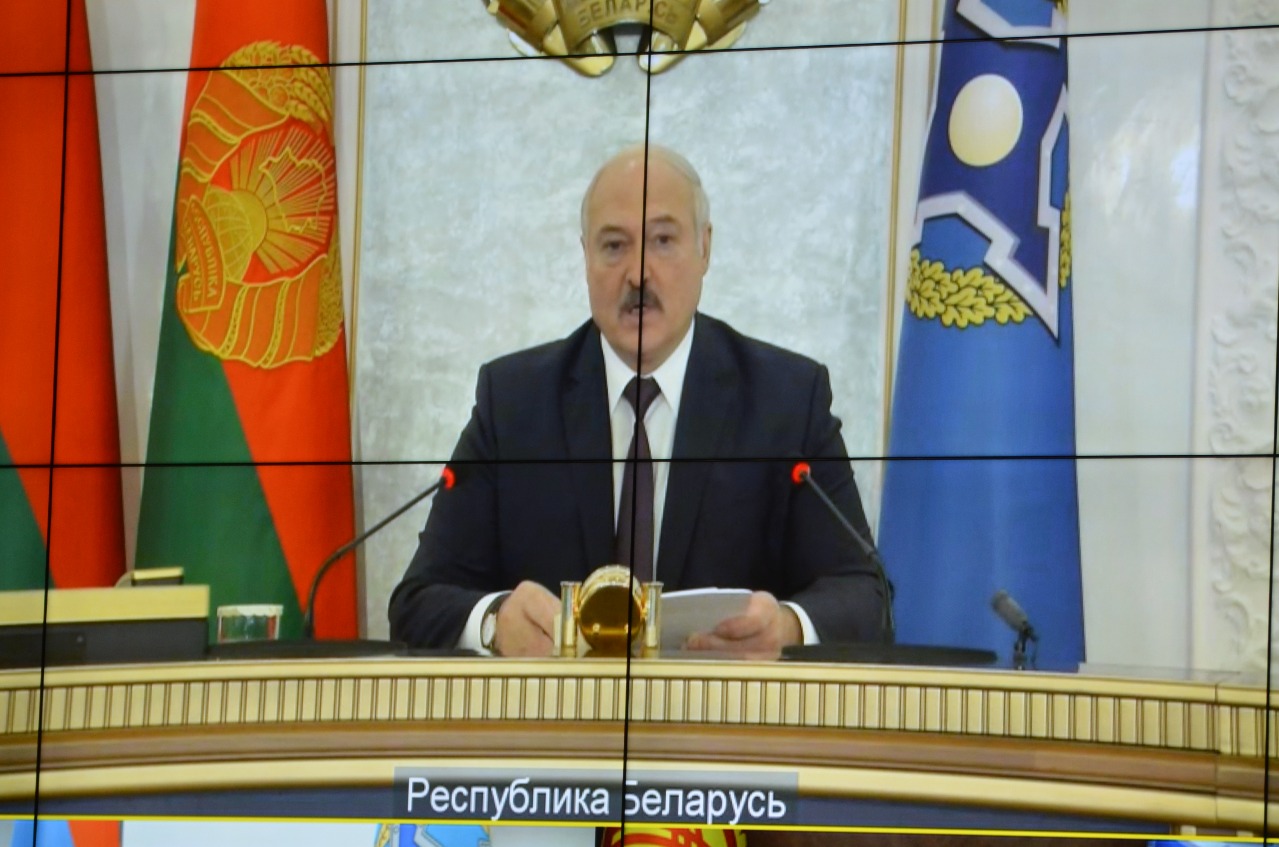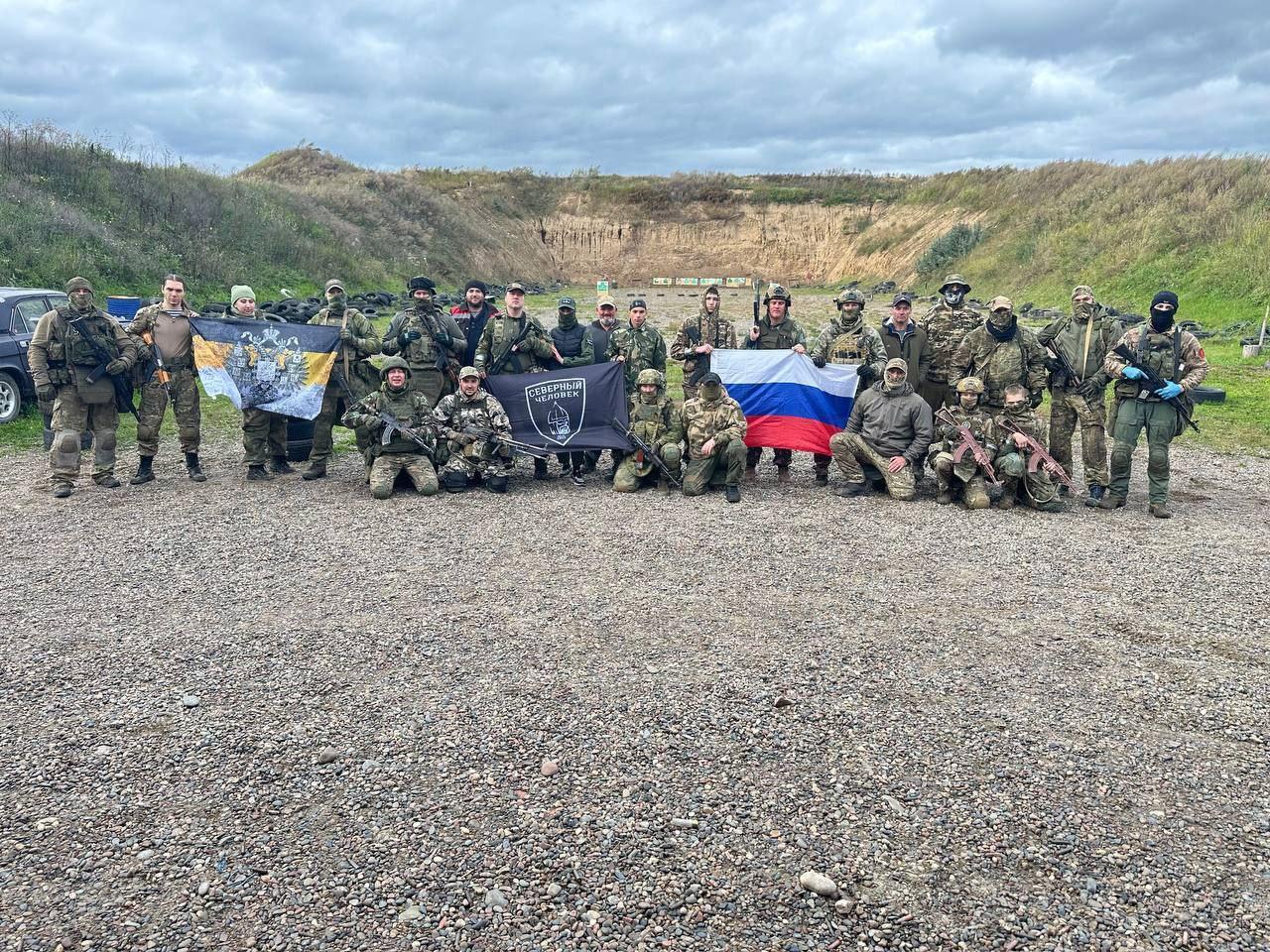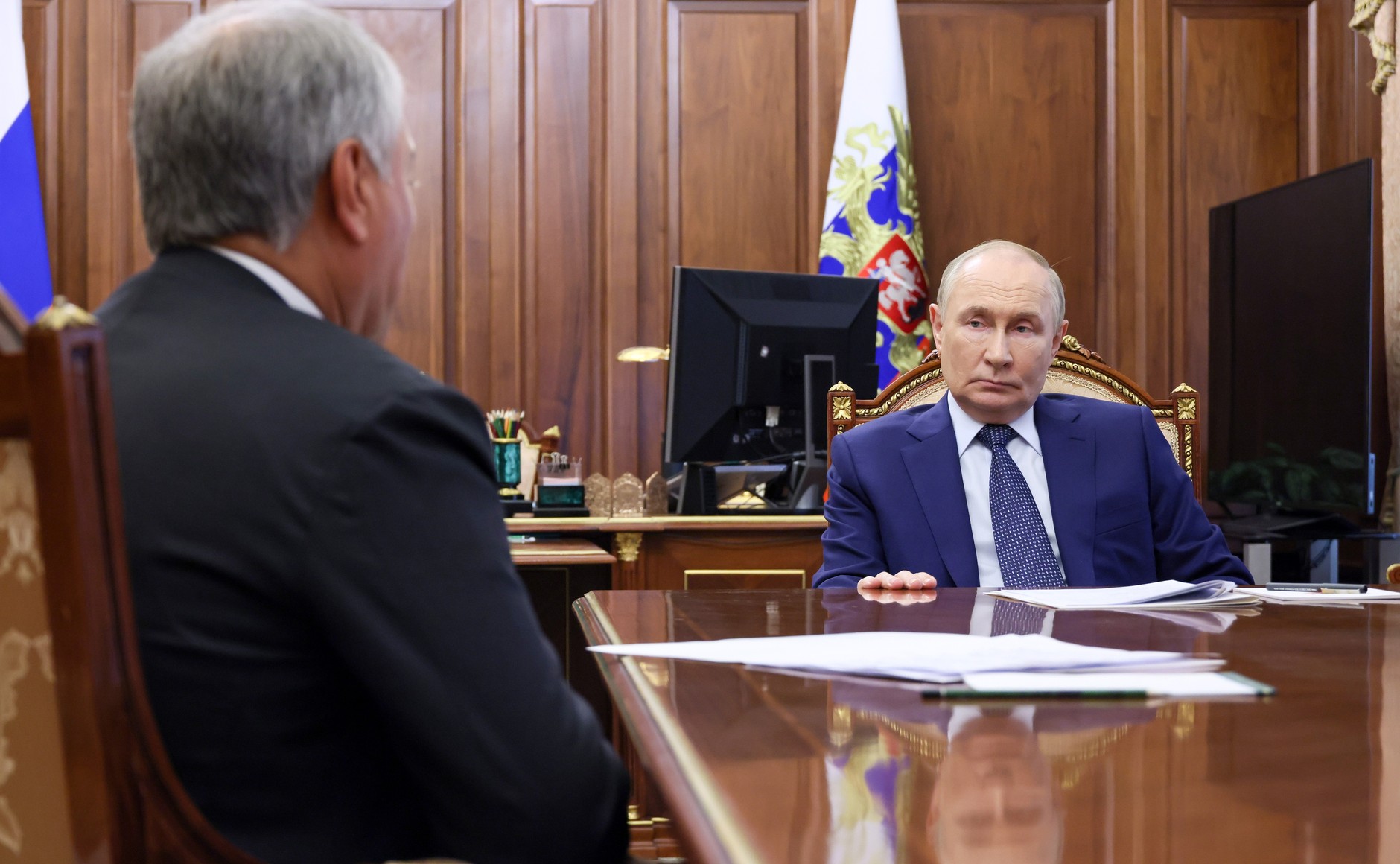
Belarusian Crisis Through the Prism of Virtual Realities
Belarusian Crisis Through the Prism of Virtual Realities
At the December 2 virtual summit of the Moscow-led Collective Security Treaty Organization (CSTO), President Alyaksandr Lukashenka once again expressed his view that the protest movement in his country is a rebellion masterminded by the West. He called the behavior of Poland and Lithuania particularly unbridled. Furthermore, he suggested that the COVID-19 pandemic boosted social tensions all over the world. But whereas, in the West, he contended, the authorities do not hesitate to use brutal force to crack down on rallies, they employ a double standard when castigating Belarus for achieving the same ends. In response, Russian President Vladimir Putin suggested that Belarusians themselves have enough “political maturity to calmly […] build an internal political dialogue with all political forces and resolve all their issues on their own, without pressure and outside interference. I have no doubt that it will work out, especially bearing in mind the political experience of the President of Belarus.” Putin then delivered his “verdict on Alexander Lukashenko in Belarus. That is, I [Putin] once again invited him to leave calmly and without delay” (Kommersant, December 3).
One day later, Belarus hosted the 18th annual Minsk Forum, an unofficial dialogue platform funded by Germany that has regularly brought together potential Western investors and representatives of the Belarusian government and opposition. This year, the proceedings were also conducted virtually. But notably, the only representative of Belarus in attendance last week from any state-linked structure was Victor Shadursky, the dean of the International Relations School of Belarusian State University. At the Forum, Shadursky surprisingly was willing to comment on what he believes precipitated the current crisis: “…Minsk used a well-known political technique of assigning responsibility for aggravating domestic problems to external forces. At first, the eastern neighbor [Russia] was assigned the role of the responsible party; but after a while, sharp criticism was redirected westwards. Poland and the Baltic countries are especially aimed at” (Tut.by, December 3).
The CSTO and Minsk Forum discussions transpired against the background of the attention-grabbing pronouncements made days earlier by Sergei Lavrov, Russia’s foreign minister, during his November 26 visit to Minsk. Lavrov greeted Lukashenka on Vladimir Putin’s behalf and confirmed the validity of what Putin and Lukashenka agreed upon in September in Sochi—i.e., the need to carry out constitutional reforms, which Belarus’s president has still shown no hurry to develop and promulgate (SN-plus, December 1). According to Arseny Sivitsky of the Minsk-based Center for Strategic and Foreign Policy Research, the fact that the Kremlin has so far not delivered regime change suggests Russia “has not yet received assurances from the West that it can meddle in Belarus’s situation” with impunity (Svaboda.org, December 2). But it is difficult to evaluate to what degree some analysts may be reading too much into Russia’s actual intentions and their underpinnings.
In the meantime, Svetlana Tikhanovskaya, the former presidential hopeful exiled to Lithuania, has already been greeted by several heads of state and even revealed an apparent invitation to visit the United States and participate in President-elect Joseph Biden’s inauguration (Belsat, November 27). Detailed plans regarding a transfer of power to Tikhanovskaya in Minsk are currently circulating in the public sphere (Svaboda.org, December 3) as well as appeals to the West to impose serious economic sanctions on Belarus and exclude it from SWIFT, the global provider of financial messaging services required for modern banking transactions (Vesti, November 16). But as pointed out by Igor Tyshkevich, a popular Belarusian investigative journalist now living in Ukraine, “The protesters have repeatedly shown their desire to shoot themselves in the foot. Calls to disconnect Belarus from the international payment system SWIFT are from that category. They do not take into account that not just the regime will suffer but the country’s economy. Incidentally, those who form the core of the protest movement—the urban middle class—will be the first to suffer. Russia will benefit greatly… But none of this matters. The main thing is to overthrow Lukashenka, and this end justifies any means. This suggests that the protesters continue to be deficient in their capacity to think” (YouTube, December 5). Appeals to impose economic sanctions are a direct threat to Belarus’s statehood, averred Foreign Minister Vladimir Makei (Tut.by, November 26).
Tikhanovskaya is now promoted by her advisors as the country’s utmost revolutionary and the voice of the Belarusian people. As is frequently the case, however, the “people” is not a homogenous group—which even some friends of the protest movement ascertain. Thus, according to the newly released November survey by Ryhor Astapenia of Chatham House, 38 percent of urban Belarusians support the protest movement, 33 percent are “observers” (may support it but do not show overt signs of that for now), whereas 28 percent represent Lukashenka’s core electorate (Russiancouncil.ru, December 1). The survey sample included 864 respondents. The previous Chatham House survey on the subject revealed that only 20 percent voted for Lukashenka on August 9. That poll was criticized for utilizing the Computer Assisted Interview method, thus dramatically under-sampling Lukashenka’s electoral base (see EDM, October 28). Elena Gapova, a sociology professor at Western Michigan University and a native of Minsk, expressed the same criticism (Facebook.com, December 2). The new survey used the same methodology, and yet it estimated Lukashenka’s current support at 28 percent. Therefore, taking into account the inherent shortcoming of the methodology as well as its neglect of rural Belarusians, who make up 23 percent of the population, it is quite reasonable to conclude that Belarusian society as a whole seems, at present, to be divided more or less equally among the three aforementioned segments: activist opponents of Lukashenka, (perhaps sympathetic) bystanders, and supporters of the current regime (see EDM, October 21).
Incidentally, when asked by Radio Liberty “how long an armed minority can govern the majority that does not recognize this minority and hates it,” Segei Loznitsa, a popular film director born in Baranovichi, Belarus, replied, “We do not know if it is a minority. Power exists as long as the majority of citizens continue to recognize and obey it. If the Lukashenka regime were really backed by the minority, then by now he […] would already be in the Hague” (Svaboda.org, November 27). Whether or not one agrees with that verdict, having a realistic image of Belarusian society is certainly a prerequisite for farsighted policy decisions with regard to this complex country.


